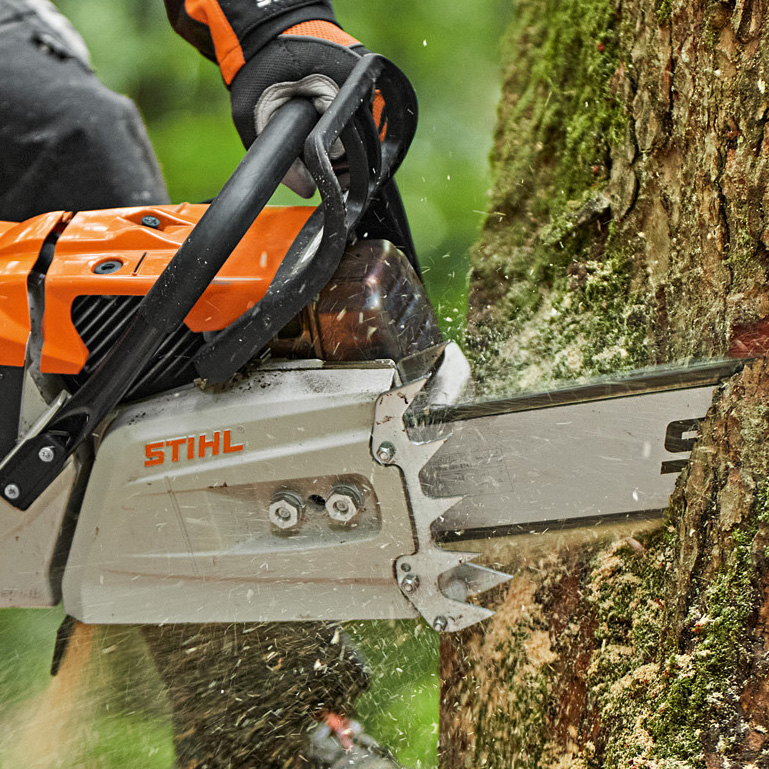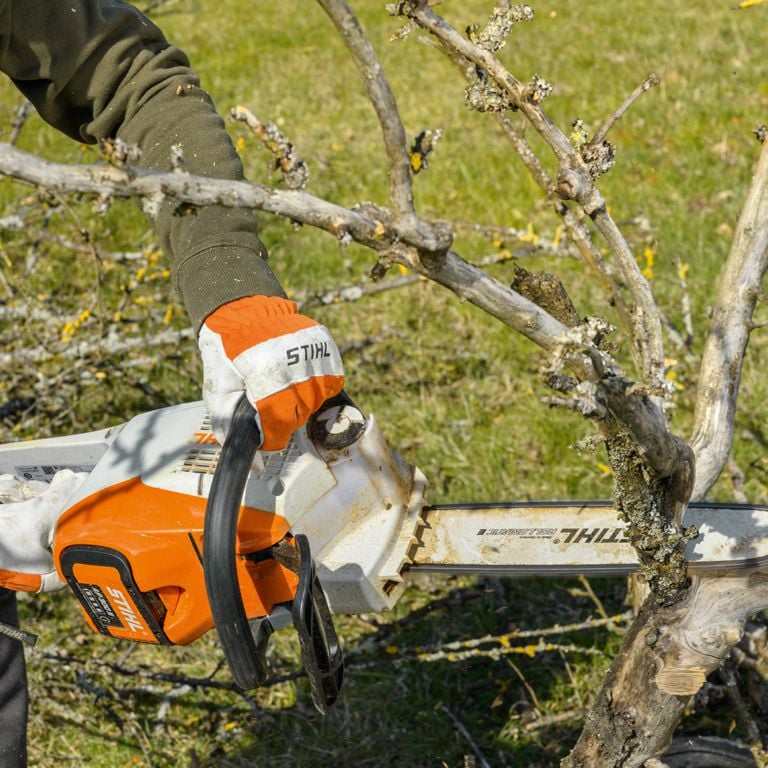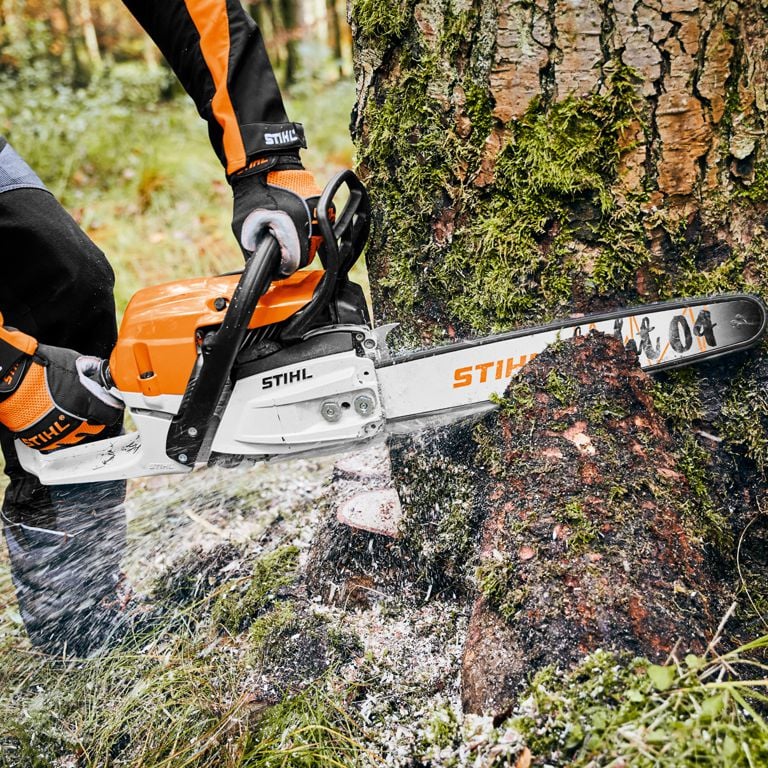
Construction of a Stihl Chainsaw Chain
Construction of a Stihl Chainsaw Chain
Buy Stihl Chainsaw Spare Parts and Accessories Here »
Stihl chainsaw chains are three-link chains that are always assembled in the same basic pattern. The shape of the cutters may differ in their shape, as well as the dimensions of the individual links.
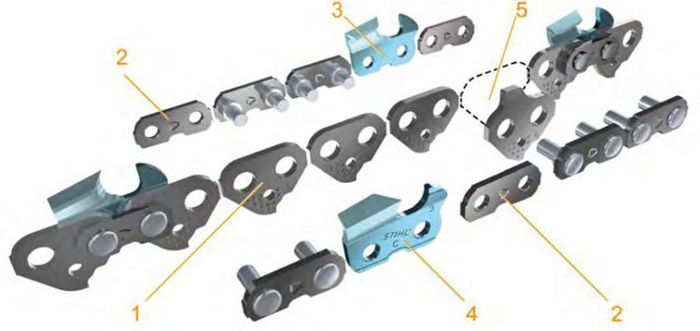
- The saw chain consists of the drive links
- The tie straps
- The left hand cutters
- The right hand cutters
- Low kickback saw chains have a humped drive link
The low kickback chains have a humped drive link, these are identified by the digit 3 in their designation, for example: 36 RS3.
Cutters
To get the optimum cutting performance from your chainsaw, it’s critical the side and top plate of the cutting edges are at a given angle in relation to one another. The angle is obtained automatically if the exact sharpening angles are observed.
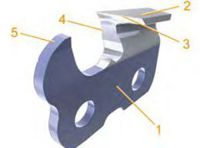
- The cutter consists of the basic tooth body
- The top plate
- The top plate cutting edge
- Side plate cutting edge
- Depth gauge
Method of Operation
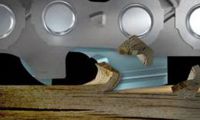
The cutters work on the chipper tooth principle, which removes chips from the wood. During this process, the top plate cutting edge lifts the chip off the bottom of the cut, while the side plate cutting edge separates the chip from the wall of the cut.
The depth gauge setting determines the height at which the cutter enters the wood and the thickness of the chip that’s removed.
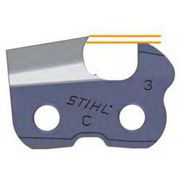
The difference in height between the top of the depth gauge and the leading edge of the top plate is known as the depth gauge setting.
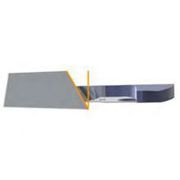
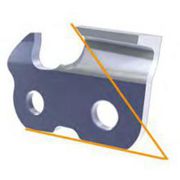
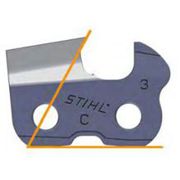
To ensure the chain runs evenly and smoothly, you need to ensure all cutters are the same length and sharpened to the specific angle.
Service and Wear Markings
The majority of chainsaw chains show service and wear markings to simplify resharpening and enable the rate of wear. To ensure this is monitored, follow these steps:
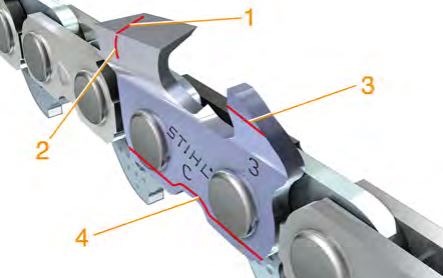
- Filing angle: Marking for the correct filing angle of the top plate cutting edge and the minimum cutter length. The chain must be replaced if this marking is reached during resharpening.
- Side plate angle: Marking for the correct angle side plate and the minimum cutter length.
- Depth Gauge: Marking for the correct angle depth gauge and checking wear. Contour of the depth gauge must be filed back parallel to this marking.
- Toe and heel wear: Reference marking for wear on the bottom of the cutter (running faces). Uniform wear parallel to marking indicates normal chain wear.

